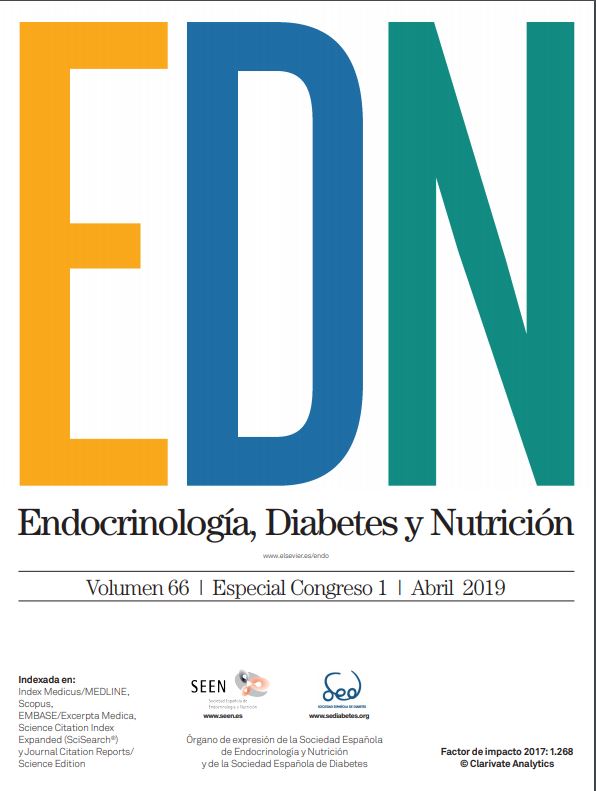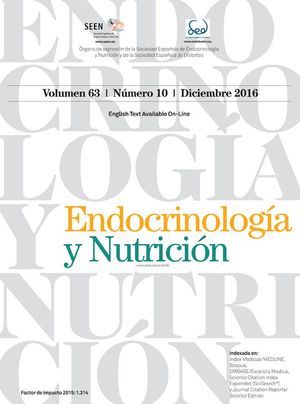P-104 - THE CANNABINOID LIGAND ABN-CBD DECREASES INSULITIS IN A MOUSE MODEL OF TYPE 1 DIABETES
aHospital Regional Universitario Carlos Haya, Málaga. bInstituto de Investigación Biomédica de Málaga, Málaga.
Introduction and objectives: GPR55 is a G protein coupled receptor with cannabinoid sensitivity that, when activated, stimulates insulin secretion and enhances glucose tolerance besides regulating release of several cytokines from immune cells, impacting the inflammatory response. Interestingly cannabidiol, another cannabinoid ligand, was found to decrease insulitis and the incidence of diabetes in the non-obese diabetic (NOD) mouse model. Moreover, a recent article showed that Abn-CBD and O-1602 (another GPR55 ligand), protected against ER stress-induced apoptosis in β-cells lines. Indeed we have reported that LH-21, a mixed CB1/GPR55 ligand, decreases pancreatic apoptosis and macrophages infiltration in the liver of type 2 diabetic mice. However, the potential role played by GPR55 in the abnormal immune response during type 1 diabetes onset is unknown. Thus, we wanted to examine if activation of GPR55 was able to reduce islet inflammation and damage in an experimental model of type 1 diabetes, i.e. injection of single high-dose of streptozotocin (STZ) in mice.
Material and methods: 10 weeks-old male C57Bl6/J mice were pre-treated with 1 mg/kg of Abn-CBD, a GPR55 agonist, or vehicle for 1 week (n = 10 mice per group), following one single dose (150 mg/kg) of STZ. Blood glucose was monitored for six consecutive days and then mice were euthanized and pancreas collected, fixed and paraffin embedded. Pancreas histopathology was analysed by haematoxilin-eosin and trichromic staining, and assessment of infiltration and inflammation was done by immunohistochemistry. T-cell infiltration was analysed by anti-CD3 immunostaining, inflammatory signaling was analysed by anti-phosphorilated NF-κB immunostaining, and inflammasome activation was assessed by TXNIP immunostaining. Cuantification was done by acquiring digital high-resolution images in an Olympus DP70 microscope and further analysis by ImageJ sofware. Statistical analysis was performed by using Student t test.
Results: Abn-CBD did not ameliorate STZ-induced hyperglycemia. However, immunohistochemical analysis showed a significant 1.6-fold decrease in intra-islet NF-κB phosphorylation (p < 0.001) and CD3+ T cells infiltration (p < 0.05) in Abn-CBD pre-treated mice compared to vehicle pre-treated mice. Concomitant reduction of intra-islet fibrosis was observed by histochemistry in Abn-CBD pre-treated mice compared to vehicle (p < 0.05). We also found significantly less TXNIP staining in the islets of Abn-CBD pre-treated mice than in the vehicle group (p < 0.05), suggesting a decreased activation of the inflammasome.
Conclusions: Altogether, we found that Abn-CBD was able to reduce STZ-induced intra-islet infiltration and inflammation, at least by decreasing two key processes as NF-κB and inflammasome activation. However, these effects were not sufficient to prevent hyperglycemia. Thus, GPR55 emerges as a potential target for counteracting insulitis-related damage in type 1 diabetes.
Funding: H2020-MSCA-IF-2016, Grant Agreement number: 748749, EU.







